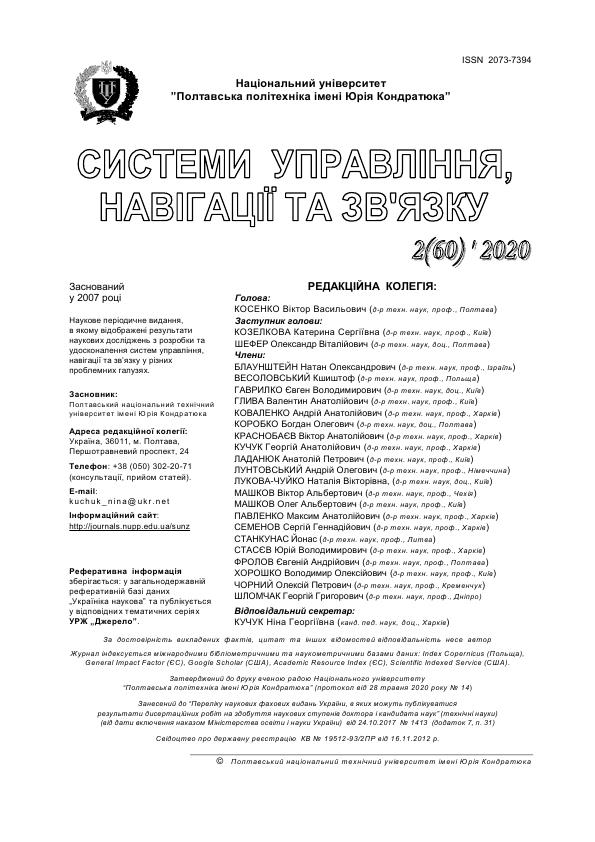DESIGNING COMPOSITE MATERIALS BASED ON FINELY DISPERSED IRON-CONTAINING SUBSTANCES FOR SCREENING IONIZING RADIATION
DOI:
https://doi.org/10.26906/SUNZ.2020.2.110Keywords:
ionizing radiation, composite material, iron ore concentrate, shielding efficiencyAbstract
Based on an analysis of the scattering mechanisms of ionizing electromagnetic radiation and the dependence of radiation attenuation on the index number of the element and its density, it is concluded that it can be shielded by materials containing iron. The foundations of designing a composite metal-polymer material are proposed for reducing the intensity of x-ray and gamma radiation. It is shown that a change in the ionizing radiation absorption with a change in the radiation wavelength occurs nonmonotonically. Therefore, for the design of the material, it is necessary to find out the preferred wavelengths (frequencies) of radiation that require shielding. It has been established that for effective screening of radiation there is a critical concentration of metal particles in the polymer matrix. This occurs at the threshold of the flow of electric current when the content of the shielding substance is 11-12% (by weight). This is consistent with the electrodynamic ratios of continuous media. When designing a material using iron ore concentrate, its various properties should be taken into account, depending on the manufacturer. The design of the protective material should be preceded by laboratory studies to determine the overwhelming fraction of iron ore particles by the size and content of iron and its compounds in the feedstock.Downloads
References
Nambiar S., Osei E. K., Yeow J. T. W. Polymer nanocomposite based shielding against diagnostic Х rays. Journal of Applied Polymer Science, 2013. 127(6). рр. 4939−4946.
Ambika M.R., Nagaiah N., Suman S. K., Role of bismuth oxide as a reinforcer on gamma shielding ability of unsaturated polyester based polymer composites. Journal of Applied Polymer Science. 2016. 134 (13). РР. 446-457.
Singh V.P., Badiger N. M. Kothan, S., Kaewjaeng S., Korkut, T., Kim H. J., Kaewkhao J. Gamma- ray and neutron shielding efficiency of Pb-free gadolinium based glasses. Journal of Nuclear Science and Techniques. 2015. No 27(4). Р. 103−112.
Mann K. S., Rani A., Heer M. S., Shielding behaviors of some polymer and plastic materials for gamma-rays. Radiation Physics and Chemistry. 2015. 106. РР. 247–254.
Mann K. S., Sidhu G. S. Verification of some low-Z silicates as gamma-ray shielding materials. Annals of Nuclear Energy, 2012. 40(1), РР. 241−252.
Ersoz O. A., Lambrecht F. Y., Soylu H. M., Tungsten-ethylene vinyl acetate (EVA) composite as a gamma rays shielding material. Indian Journal of Pure & Applied Physics. 2016. 54 (12), РР. 793−796.
Seon-Chil Kim and Sung-Hyoun Cho. Analysis of the Correlation between Shielding Material Blending Characteristics and Porosity for Radiation Shielding Films. Journals Applied Sciences. 2019. 9(9). Р. 1765. https://doi.org/10.3390/app9091765
Джур Е.А., Санин А.Ф., Божко С.А., Андрианов А.Ю., Белоус В.А., Рыбка А.В., Захарченко А.А., Борисенко В.Н., Зиновьев А.М., Кузнецов А.П., Плисак Ю.В. Композиционный материал для защиты радиоэлектронной аппаратуры космических аппаратов от ионизирующего излучения. Вестник Сибирского государственного аэрокосмического университета им. академика М.Ф. Решетнева. 2013. No 6 (52). С. 126–131.
Glyva V., Lyashok J., Matvieieva I., Frolov V., Levchenko L., Tykhenko O., Panova O., Khodakovskyy O., Khalmuradov B., Nikolaiev K. Development and investigation of protective properties of the electromagnetic and soundproofing screen. Eastern-European Journal of Enterprise Technologies. 2018. Iss. 6/5 (96). P. 54–61. https://doi.org/10.15587/17294061.2018.150778.




